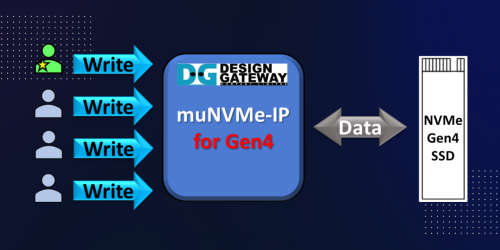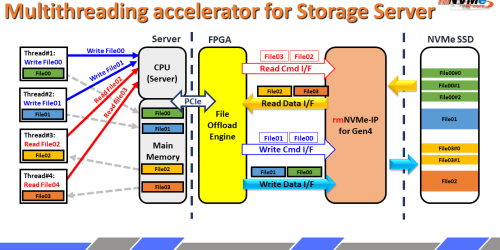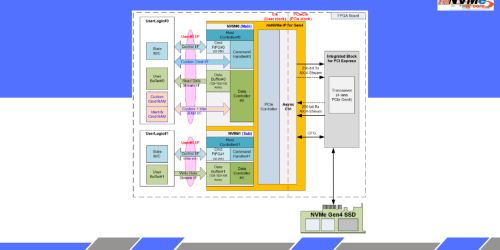rmNVMe-IP for Gen5: Breakthrough 4K IOPS Performance with fully CPU offload
Experience groundbreaking 4K IOPS performance with the rmNVMe-IP Gen5 storage IP core! Say goodbye to CPU bottlenecks as this innovative core offers fully CPU offloaded operations. Achieve mind-blowing data transfer speeds exceeding 10,000 MB/s write speed, effortlessly.
Discover simplified NVMe Gen5 SSD random access with minimal signal usage. This demo showcases key features like simultaneous 4KB read and write command queues, optimized high performance, and low FPGA resource utilization.
Setup details and test results are meticulously covered. Unlock the future of storage solutions with rmNVMe-IP Gen5. Explore our comprehensive demo for a hands-on experience.

rmNVMe Gen 5’s key features
- 4KB Random Access NVMe Host Controller
- No CPU & No external memory are required
- Support simultaneous 4KB read & write command queue
- High optimized for high performance & low FPGA resource usage

To demonstrate the capabilities of our rmNVMe-IP for gen5, prepare the following hardware:
- AB19 M2PCI adapter from Design Gateway
- NVMe Gen5 SSD
- ATX power supply for connecting and powering the AB19
- Computer for downloading the demo file and monitoring the test.
With this hardware in place, we are ready to assemble the components.
How to set up the hardware

- The first step is to connect the NVMe Gen5 to the AB19 adapter
- Take your NVMe Gen5 SSD and insert it into the Drive1 slot on the AB19 adapter
- Connect a power cable to the fan of the SSD, and plug in the PCIe power cable to the AB19
How to set up the Agilex board

- Connecting the AB19 adapter to the PCIe connector on the Agilex board
- Adjust the height of the AB19 so that it aligns with the PCIe connector on the Agilex board at the same vertical level
- Connect the micro USB cable for JTAG programming and NiosII command shell
- Plug in the power adapter to power the Agilex board
By following these steps, you are now ready to proceed with the rmNVMeIP G5 demo.

After completing the hardware setup, the rmNVMeIP for Gen5 menu will be displayed on the console.
This menu provides various options to select the test operation. The first command should be Identify command. We will obtain crucial information about the NVMe SSD, such as its model number and capacity.

To assess the Write performance, the rmNVMeIP for Gen5 generates multiple 4KB Write commands using two different address modes: sequential access and random access.
For the evaluation, set the transfer size to 128 MB and the test pattern to LFSR.

On the left console, it is the result of the sequential access, which showcases a remarkable speed of up to 10200 MB/s.
In contrast, the right consoles which is random access showed a lower speed of 4300 MB/s.
Note that the write performance can vary depending on each SSD’s characteristics. For example, some enterprise SSDs which are Gen4 speed achieve 5900 MB/s for random access, matching their sequential access performance.

Now we execute the mixed Write-Read command using the rmNVMeIP for Gen5. Two conditions with different settings of Write/Read loading are demonstrated.

On the left, the full bandwidth for both Write and Read command are configured.
On the right, the full speed of Write and 10% of full speed of Read are configured.

Upon comparing the results from both tests, the write performance is slightly reduced, from 10000 MB/s to 8800 MB/s, when increasing the read command loading from 10% to 100%.
The result indicates that this SSD gives higher priority to write command than read command.
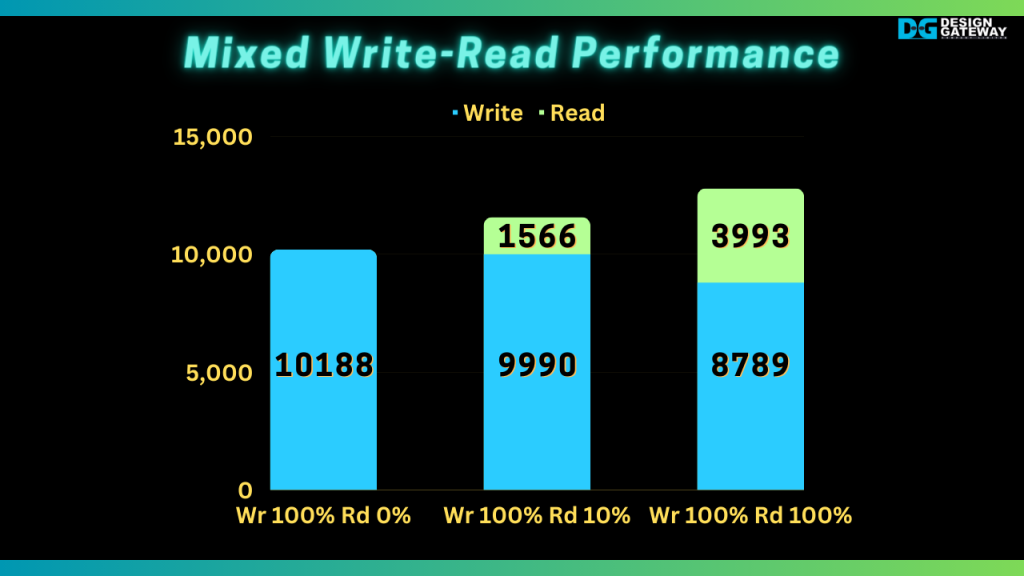
This is the total performance graph, which illustrates the combined write and read speeds across different write/read loading scenarios.
As you can see, the write performance experiences a minor reduction as increasing the read operation loading. The range of total performance span from 10000 to 12700 Mbytes/sec. This characteristic is unique to each SSD.
We have encountered the enterprise SSDs at Gen4 speed that display well-balance between write and read commands. The same speed of write and read commands are performed under 100% write and 100% read condition.
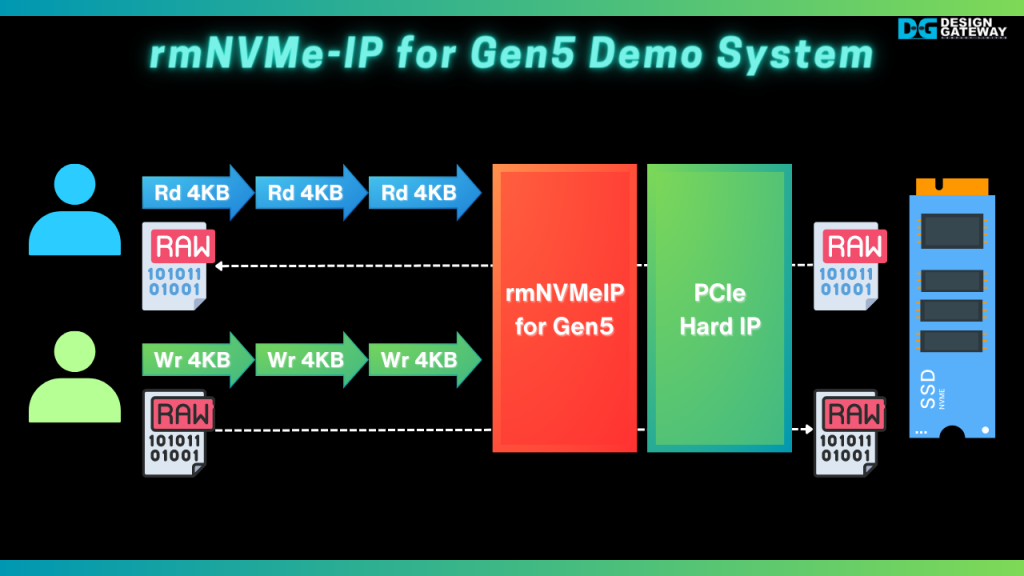
Our Gen5 IP introduces two user interfaces, each enabling the independent transmission of multiple 4KB write and read commands.
The write and read data stream are parallelly transferred using their own interfaces, ensuring optimal efficiency.
Our demo offers a comprehensive platform to evaluate the SSD’s characteristic under diverse write/read loading configurations. It also provides the additional options like sequential access or random access.
Let’s explore and experience with rmNVMeIP for Gen5 demo at our website.
https://dgway.com/rmNVMe-IP_A_E.html
YouTube: https://youtu.be/AjoAhOqOkqI

